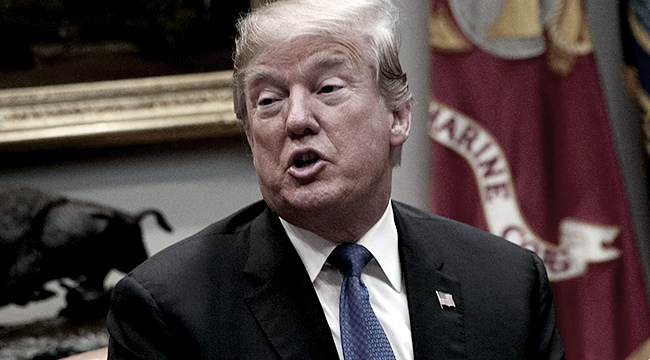
Things are not going well for the Trump administration. The president is afraid to take questions from the press, and the Russia investigation and potential for obstruction of justice charges continue to build momentum. A recent tell-all book added explosive allegations (backed up by recordings) to the mix, and allegations of Trump’s poor mental health are flying everywhere.
All of this has plenty in Washington thinking about the 25th Amendment. So what is the 25th Amendment? And why wouldn’t it work on Trump?
- The 25th Amendment is all about presidential succession: If the president dies, the vice president takes over, right? Well, yes, now. But until the late 1960s, that wasn’t spelled out in the U.S. Constitution. It was more a matter of tradition than anything else. So, between 1965 and 1967, the 25th Amendment was ratified by the states to spell out what happens if a president dies or becomes incapacitated.
- In this case, we’re talking about Section 4: Believe it or not, presidents staying in office while being unable to do their jobs was a real problem without any legal precedent. In 1919, Edith Bolling Galt Wilson, Woodrow Wilson’s wife, essentially took over running the country after Wilson suffered a debilitating stroke. Section 4 was designed to create a process instead of having spouses simply fill in.
- The burden of proof, so to speak, on Section 4 is very high, however: The vice president and 13 members of the Cabinet have to decide that the president is not competent to do his job. They must put that in writing and send that to the House speaker and the Senate president pro tempore. That would makes the vice president the “acting president.” However, all the president has to do is send his own declaration to the House and Senate saying he’s fine (and in this case, probably come up with a crude nickname for his VP). If the VP and Cabinet still disagree, they can send the legal equivalent of a note saying, “Nope.”
- Then Congress gets involved: Basically, if the president and the rest of the executive branch are arguing, then the House and Senate vote. If two-thirds of both Houses agree the president can’t do his job, then the VP takes over as acting pesident.
- That’s a high bar, and there’s a problem here regardless of the vote: Think about it; if it goes to the House and Senate, and Trump wins, Trump can fire his Cabinet members. Any Cabinet member serves at the pleasure of the president, but outright firing members of the Cabinet is rare, and the last time it happened, in 1979, it was seen by the public as an admission of failure on Jimmy Carter’s part. Also, a VP can’t be fired, they must be impeached. So, that process would start, which would set off a constitutional crisis. It seems incredibly unlikely the GOP would vote out Trump or Pence, and a war at the top would have massive political ramifications. And during all of this, Trump would have to somehow find and appoint at least thirteen new Cabinet secretaries.
- But what if they do vote Trump out? He’s not going away: Keep in mind, we’ve never used Section 4. Ever. This is unexplored territory. Trump would likely go to court to prove he’s not incompetent, which would start a different constitutional crisis. The House and Senate might be forced to take a second vote and outright impeach Trump. Yet tradition dictates that the judge in that case, since impeachment is a trial, would be the vice president. Which would set off another constitutional crisis. And if they do impeach Trump, they need to decide his crimes. You can’t really throw a president out of office just for being a nuisance; you need legit criminal charges.
- So is there a way for the GOP to get rid of Trump that isn’t going to set off a constitutional crisis?: Not really. By design, it’s hard to remove a sitting president. They have to commit horrendous crimes and there has to be a high burden of proof, in order to keep government stable and prevent palace coups. You might notice that Section 4 is basically designed so that the president has to be comatose in order for it to flow smoothly.
Washington is obsessed with the 25th Amendment because, in what are no doubt the fantasies of many elected individuals, it’s a way to boot Trump without the scandal of impeachment, a sort of soft landing. But the U.S. Constitution isn’t a pillow, and it’s not designed to let you down easy. And by all indications, both Mike Pence and the Cabinet are sticking by Trump, even if they’re utterly contemptuous of him. If the rest of Washington is really concerned about Trump’s fitness to serve, they’d better brace for a real fight.
